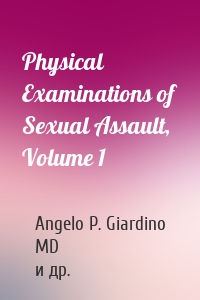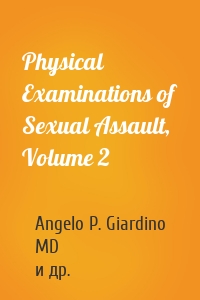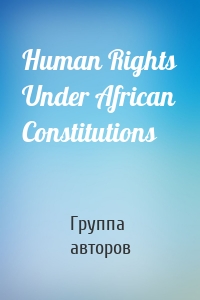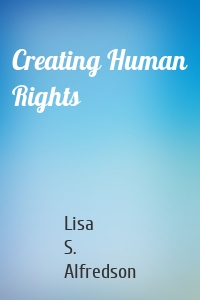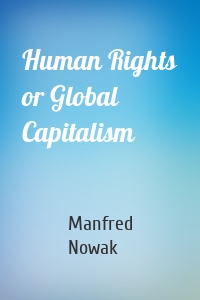Юриспруденция, право
7421 кн.
Who Killed Bob Crane?
Can Modern DNA Science Crack this Cold Case? The 1978 murder of actor and American icon Bob Crane remains one of the most high-profile unsolved celebrity murders of all time. Thirty-eight years after his brutal murder in Scottsdale, Arizona, millions around the world still want answers. Was John Carpenter the killer? Or did police arrest an innocent man? For nearly 40 years, police remained convinced of Carpenter’s guilt. Early DNA testing, decades ago, was unable to positively link...
| Автор | John Hook |
Physical Examinations of Sexual Ass...
Angelo P. Giardino, MD и др.
236 pages, 666 images, 21 contributors In cases of sexual assault, it is important that investigators and care providers be able to respond quickly and appropriately in examining survivors, not only to ensure their health and safety but also to preserve any physical evidence left by the perpetrator. In such cases, a convenient visual reference can provide valuable support to investigators in making a timely and accurate assessment. With a convenient visual reference at the ready, sexual...
| Автор | Angelo P. Giardino, MD и др. |
The Terror Factory
The paperback edition of The Terror Factory will include all new information on the FBI's counter-terrorism efforts related to the 2013 Boston Marathon bombing, as well as how the government has used (potentially illegally) FISA information in sting cases.The original edition of The Terror Factory received massive media attention, including author appearances on CBS This Morning, Democracy Now!, On The Media, MSNBC, The Leonard Lopate Show, and C-SPAN's Book TV.Trevor is now an...
| Автор | Trevor Aaronson |
Physical Examinations of Sexual Ass...
Angelo P. Giardino, MD и др.
232 pages, 555 images, 25 contributors While examining suspected sexual assault survivors, it is important that investigators be able to accurately assess not only for those findings indicative of assault but also for normal or otherwise nonassaultive findings. The difference between normal and assaultive findings may be subtle, and assessing for normal findings in cases of suspected sexual violence may be challenging. That being the case, sexual assault investigators of every variety can...
| Автор | Angelo P. Giardino, MD и др. |
Human Rights Under African Constitu...
Some of the most massive and persistent violations of human rights occur in African nations. In Human Rights Under African Constitutions: Realizing the Promise for Ourselves , scholars from a wide range of fields present a sober, systematic assessment of the prospects for legal protection of human rights in Africa. In a series of detailed and highly contextual studies of Ethiopia, Ghana, Guinea, Morocco, Mozambique, Nigeria, Rwanda, Senegal, South Africa, Sudan, and Uganda, experts seek to...
| Автор | Группа авторов |
Creating Human Rights
Selected by Choice magazine as an Outstanding Academic Title Creating Human Rights offers the first systematic study of a pioneering women's refugee movement and its challenge, as an international trigger case, to more conventional paths toward human rights policy development. Lisa S. Alfredson argues that such cases, which unfold in the context of a specific country and have profound impacts on international human rights efforts, have been neglected in research and pose a challenge to...
| Автор | Lisa S. Alfredson |
Heavenly Ambitions
In the popular imagination, space is the final frontier. Will that frontier be a wild west, or will it instead be treated as the oceans are: as a global commons, where commerce is allowed to flourish and no one country dominates? At this moment, nations are free to send missions to Mars or launch space stations. Space satellites are vital to many of the activities that have become part of our daily lives—from weather forecasting to GPS and satellite radio. The militaries of the United...
| Автор | Joan Johnson-Freese |
Human Rights or Global Capitalism
The fall of communism in the late 1980s and the end of the Cold War seemed to signal a new international social order built on pluralist democracy, the rule of law, and universal human rights. But the window of opportunity for creating this more just, more equal, and more secure world slammed shut just as quickly as it opened. Rather than celebrate the triumph of democracy over autocracy, or political freedom over totalitarian rule, the West exulted in the victory of capitalism over communism....
| Автор | Manfred Nowak |
Mexico's Human Rights Crisis
Lawless elements are ascendant in Mexico, as evidenced by the operations of criminal cartels engaged in human and drug trafficking, often with the active support or acquiescence of government actors. The sharp increase in the number of victims of homicide, disappearances and torture over the past decade is unparalleled in the country's recent history. According to editors Alejandro Anaya-Muñoz and Barbara Frey, the «war on drugs» launched in 2006 by President Felipe...
| Автор | Группа авторов |
Dirty Dealing
"Cartwright tells the story of the Chagra brothers, Lee and Joe, as they get mixed up with the drug-running community along the border and in short order find themselves hopelessly entangled in a net cast by the DEA. Even readers unfamiliar with the well-publicized events of the book or of the dark, lawless aspect that often rules El Paso will find themselves pulled along by the plot: brigands and intrigue leap from almost every page, and the story just gets wilder the further into it you...
| Автор | Gary Cartwright |



